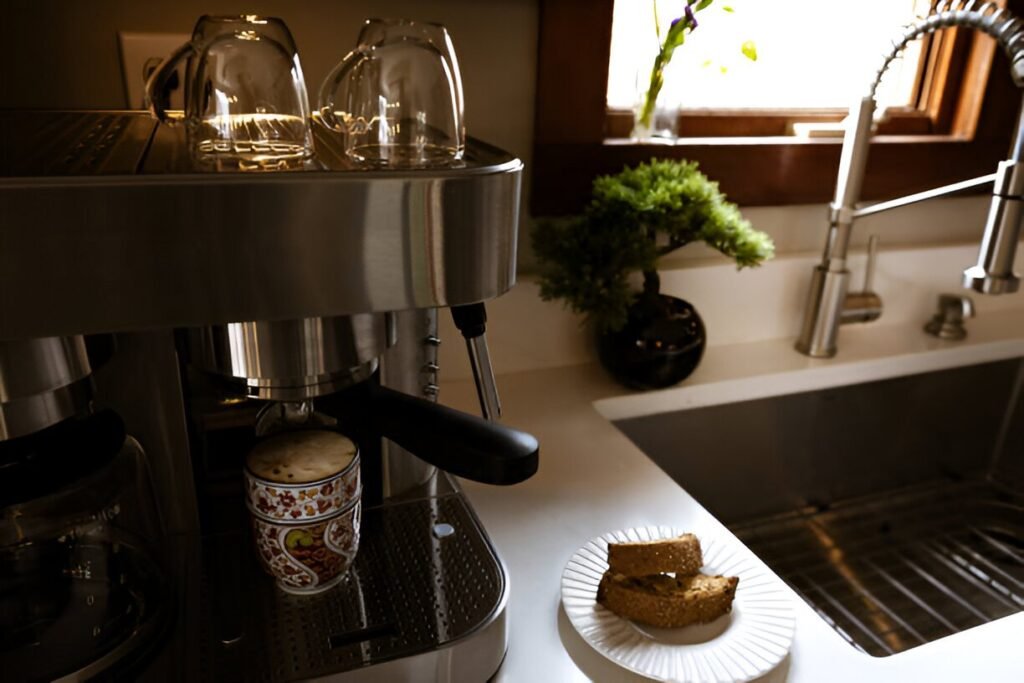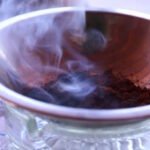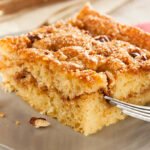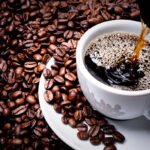If you are a coffee enthusiast, you know that not all coffee is created equal. Among various brewing methods and styles, American coffee holds a unique place in the hearts of many. This blog post aims to demystify the art of making American coffee and provide you with detailed steps, tips, and tricks to brew the perfect cup. Whether you’re new to the world of coffee or a seasoned barista looking to refine your skills, this guide will cover everything you need to know.
The Charm of American Coffee
American coffee, often referred to as drip coffee, is a staple in many households and cafes across the United States. It’s known for its smooth, balanced flavor and ease of preparation. Unlike espresso, which is concentrated and intense, American coffee is lighter and perfect for those who enjoy savoring their cup over time.
Why Choose American Coffee?
American coffee is versatile, making it suitable for any time of the day. It can be enjoyed black, with milk, or sweetened to your liking. Its milder flavor profile makes it a favorite among those who find espresso too strong but still want a rich, aromatic experience.
The History Behind the Brew
Understanding the origins of American coffee can deepen your appreciation for this beloved beverage. The method became popular in the 20th century with the advent of electric drip coffee makers, which made brewing a pot of coffee convenient and accessible. Today, it’s a symbol of comfort and routine for many.
Types of American Coffee Machines
There are various machines to choose from when brewing American coffee. From basic drip coffee makers to advanced models with built-in grinders and programmable settings, the options are endless. Choosing the right machine can significantly impact the quality of your brew.
Selecting the Right Coffee Beans
The foundation of any great cup of coffee lies in the beans. Here’s how to choose the best ones for your American coffee.
Understanding Coffee Bean Types
There are two primary types of coffee beans—Arabica and Robusta. Arabica beans are known for their smooth, complex flavors, while Robusta beans are stronger and more bitter. For American coffee, Arabica beans are generally preferred.
The Importance of Freshness
Fresh beans make the best coffee. Always check the roast date on the packaging and aim to use the beans within two weeks of roasting. Stale beans can result in a flat, lifeless brew.
Where to Buy Quality Beans
Specialty coffee shops and online retailers often offer a wide selection of high-quality beans. Look for beans that are freshly roasted and ethically sourced. Supporting local roasters can also ensure you’re getting a superior product.
Grinding Your Coffee
Grinding your coffee correctly is crucial for achieving the perfect brew. Here’s what you need to know.
The Right Grind Size
For American coffee, a medium grind size is ideal. Too fine a grind can lead to over-extraction and bitterness, while too coarse a grind can result in under-extraction and a weak flavor.
Types of Grinders
There are two main types of coffee grinders—blade and burr. Burr grinders are preferred for their ability to produce a consistent grind size, which is essential for even extraction. Blade grinders are less expensive but can result in uneven grounds.
Grinding Just Before Brewing
To maximize freshness and flavor, grind your coffee beans just before brewing. Pre-ground coffee can lose its aroma and taste quickly, so it’s best to grind only what you need.
Water Quality and Temperature
Water plays a significant role in the quality of your coffee. Here’s how to get it right.
Using Filtered Water
Tap water can contain impurities that affect the taste of your coffee. Using filtered or bottled water can help ensure a cleaner, more enjoyable brew.
Optimal Water Temperature
The ideal water temperature for brewing American coffee is between 195°F and 205°F. Water that’s too hot can scorch the coffee grounds, while water that’s too cool can result in under-extraction.
Measuring the Water-to-Coffee Ratio
A good starting point for American coffee is a ratio of one to two tablespoons of ground coffee per six ounces of water. Adjust the ratio to suit your taste preferences.
Commercial Grade Stainless Steel Percolate Coffee Maker
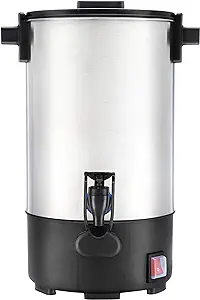
- Hot Water Urn for Catering
- 30-Cup, 3.5L
- Stainless Steel
Brewing Techniques
Now that you have your beans, grinder, and water ready, let’s move on to the brewing process.
Setting Up Your Coffee Maker
Ensure your coffee maker is clean and in good working order. Any leftover coffee residue can affect the flavor of your brew.
The Bloom
The bloom is the initial stage of brewing where hot water releases CO2 from the coffee grounds. Allow the coffee to bloom for about 30 seconds before continuing the brewing process. This step can significantly enhance the flavors of your coffee.
Completing the Brew
Once the bloom is complete, continue adding water in a steady, even stream. The entire brewing process should take about 4-5 minutes. Once done, give the coffee a quick stir to ensure even consistency.
Enhancing Your Coffee Experience
There are various ways to elevate your American coffee experience. Here are some ideas.
Adding Milk and Sweeteners
American coffee can be enjoyed black, but adding milk, cream, or sweeteners can enhance its flavor. Experiment with different combinations to find what you like best.
Using Flavored Syrups
Flavored syrups like vanilla, caramel, or hazelnut can add an extra dimension to your coffee. Use sparingly to avoid overpowering the natural flavors of the coffee.
Trying Different Brewing Methods
While drip coffee is the most common method for making American coffee, other techniques like pour-over or French press can also produce excellent results. Each method has its unique characteristics and can offer a different coffee experience.
Troubleshooting Common Issues
Even seasoned coffee makers encounter issues. Here’s how to troubleshoot common problems.
Bitter Coffee
Bitter coffee is often a result of over-extraction. Ensure you’re using the correct grind size and water temperature. Additionally, avoid brewing for too long.
Weak Coffee
Weak coffee is usually a sign of under-extraction. Check your grind size and make sure you’re using enough coffee grounds. Also, ensure your water temperature is within the optimal range.
Inconsistent Flavor
Inconsistent flavor can be due to uneven coffee grounds or variations in water temperature. Investing in a quality burr grinder and using a thermometer can help improve consistency.
Cleaning and Maintaining Your Equipment
Regular cleaning and maintenance of your coffee equipment are essential for a great-tasting brew.
Daily Cleaning
Rinse your coffee maker and carafe with warm soapy water after each use. This prevents coffee oils and residue from building up.
Deep Cleaning
Perform a deep cleaning of your coffee maker at least once a month. Use a mixture of vinegar and water to descale and remove any mineral buildup.
Replacing Worn Parts
Over time, certain parts of your coffee maker, like the filter basket or carafe, may wear out. Replacing these parts when needed can help maintain the quality of your coffee.
The Joy of Experimentation
One of the best aspects of making coffee is the ability to experiment and find what works best for you.
Trying Different Beans
Don’t be afraid to explore different types of coffee beans from various regions. Each variety offers unique flavors and aromas.
Adjusting Brew Variables
Tweaking variables like grind size, water temperature, and brew time can lead to new and exciting flavors. Keep a coffee journal to track your experiments and results.
Seeking Feedback
Sharing your coffee with friends and family can provide valuable feedback. They might offer insights or suggestions you hadn’t considered.
Conclusion
Making American coffee is an art that combines the right beans, equipment, and techniques. By following the steps outlined in this guide, you can brew a perfect cup every time. Remember, the key to great coffee is quality ingredients and a willingness to experiment. Enjoy the process and discover what makes your perfect brew.
If you’re passionate about coffee and want to take your skills to the next level, consider joining our online community of coffee enthusiasts. Share your experiences, learn new techniques, and participate in exclusive events. Happy brewing!
FAQs
What type of beans are best for American coffee?
Arabica beans are generally preferred for their smooth and complex flavors.
How should I store my coffee beans?
Store your beans in an airtight container in a cool, dark place to maintain freshness.
Can I use pre-ground coffee?
While pre-ground coffee is convenient, grinding your beans just before brewing will yield the best flavor.

